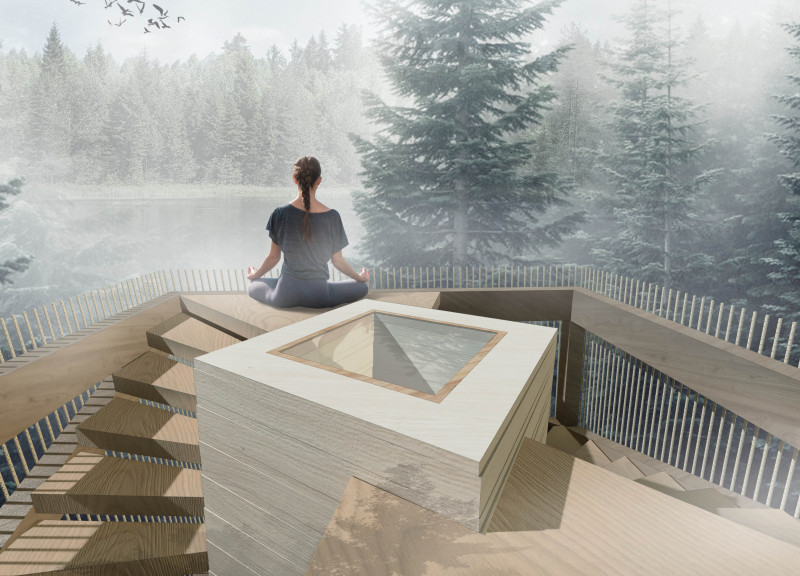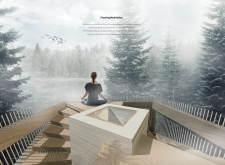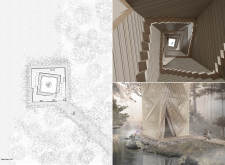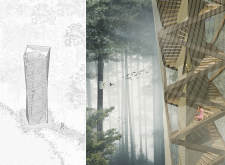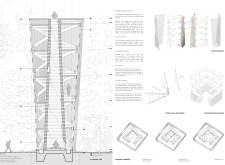5 key facts about this project
Floating Meditation is set in a natural environment that actively engages with its surroundings, providing a space for introspection and self-reflection. The design concept centers on integrating natural elements—air and greenery—into the meditation process. By connecting users with nature, the intention is to create an atmosphere that supports contemplation, reflecting on the themes of Past, Now, and Future.
Structural Core and External Envelope
Two main components make up the design: the structural core and the external envelope. The structural core forms the foundation of the meditation space, using layered timber pieces that ensure stability while offering a warm atmosphere. This core acts as a quiet retreat for contemplation, allowing different forms of meditation to take place within its walls.
The external envelope, created from hemp rope, introduces a lightness to the structure, facilitating interaction between indoors and outdoors. This design feature enhances the overall appearance and allows users to connect with the natural landscape, ensuring that the elements are a part of the meditation experience.
Double Spiral Staircase
A notable aspect of the design is the double spiral staircase. This staircase serves as an important link between the internal meditation space and the open air. It helps people move through the building while marking the transition from the enclosed areas to the expansive landscape outside. One path leads to a darker, quiet area for deep reflection, while the other invites the flow of light, encouraging users to engage with the changing qualities of their surroundings.
Floor Plan Flexibility
The meditation space features a flexible floor plan with modular components that users can rearrange as needed. Generally, the floor maintains a flat, tatami-like surface that is suitable for daily use. However, it can also be easily transformed into a single platform for meditation by reconfiguring four pieces. This adaptability reflects the design's consideration of user needs and its focus on supporting personal introspection.
Throughout the space, materials like timber and rope play a key role in creating a calm atmosphere. Their strategic use fosters an environment conducive to reflection and connects users with the surrounding nature. This careful attention to detail creates a meditation sanctuary that encourages a deeper awareness of oneself and the world outside.


